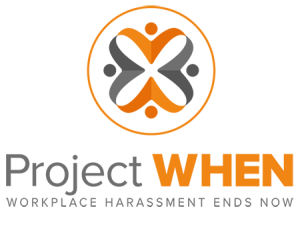Transition to Modern, Collaborative Work Environment – Case Study – Wiley
Transition to a modern, collaborative work environment: a case study
Adapting to the modern business world, transitioning to a collaborative work environment
John Wiley & Sons publishing has been in business for over 200 years, and in an attempt to bring their organization into the 21st Century, the company decided to renovate its global headquarters in Hoboken, New Jersey.
With a goal of moving Wiley colleagues and leaders to a more open and collaborative space, Wiley contacted Stegmeier Consulting Group (SCG) early on in the project for our change management expertise and extensive knowledge in preparing an organization’s workforce for new ways of working.
An insightful approach to prepare employees for the transition to a more collaborative workplace
SCG began our engagement by developing and conducting a Change Readiness Survey. This data gathering exercise allowed us to better understand the concerns of approximately 1,100 Wiley employees who would be affected by this huge shift in how people work. These insights enabled our team to better identify some of the activities and messaging that would be needed to help prepare employees for the change and build excitement.
To empower the project team in implementing and communicating the rationale for the workplace change to employees, SCG created a comprehensive Change Management Strategy, Change Communications Plan, and Communications Schedule supported by multimedia communications content and materials. These deliverables served as a roadmap which identified key milestones for employee engagement, touchpoints to connect with managers, and a step-by-step guide on how and when to communicate various aspects of the change.
Engaging the workforce in the change management process
SCG also conducted leadership coaching and pulse checks on the workforce’s preparedness for change to align the transformation with their thoughts on the future of the workplace.
Since employee engagement is crucial in managing workplace change, our team spearheaded the establishment of an employee engagement group that consisted of willing representatives from each workgroup involved in the organizational change. This group of change champions represented the voice of their peers and communicated valuable information back to the team members.
SCG facilitated the employee engagement group’s meetings and events and led them in the development of new workplace protocols. Once the colleagues had created a set of new office etiquettes, our consultants designed an electronic protocols guide, which was referred to as the Wiley Culture Code, detailing how employees can contribute to a clean, safe, and enjoyable workplace.
To introduce the new workplace to Wiley employees, our project team contributed to the creation of a welcome packet which included labeled floor plans. This document served as a key source of information about the new workplace and guided employees on how to function in a modern, collaborative work environment.
The advantage of evaluating a new office environment after move-in
SCG completed its engagement by developing, administering and reporting on a post-occupancy survey. This data gathering push was done to identify how employees were adapting to new ways of working and to alert Wiley to potential areas for improvement.
We’ve seen a number of clients, after settling into a new office environment, decide that a post-change evaluation is not critical. This usually stems from overall fatigue or feeling like things are completely wrapped up on the project because the space passes ‘the eye test’ and employees have seemingly acclimated to it well.
A change-adoption survey, however, can alert you to shortcomings both behaviorally in how the space is being used by employees and structurally, touching on any minor modifications to the new space that may be needed. Very often the solutions identified in these assessments can be implemented without any additional expense to the organization while at the same time greatly improving the employee workplace experience.
In the case of Wiley, SCG compared data from the Change Readiness Survey with that from the Post Occupancy Survey. The results showed that employees were generally more satisfied with the new office environment than with the old one.
The survey also helped Wiley uncover challenges that employees were facing when utilizing the new facility and provided insight on which factors needed attention. These challenges highlighted the need to reinforce workplace protocols and place emphasis on Corporate Culture and Leadership Behavior in relation to utilizing new spaces such as meeting rooms.
Additional guidance for Wiley was offered through recommendations to address identified challenges and how to improve employees’ adoption of the new office environment.
Moving to a modern & collaborative work environment
Does this sound like something that could help your company navigate the waters of a workplace change? If your company is changing its physical workplace, make sure your workforce is not only prepared but excited for the change! Take the first step by reaching out to Stegmeier Consulting Group through the form below.




